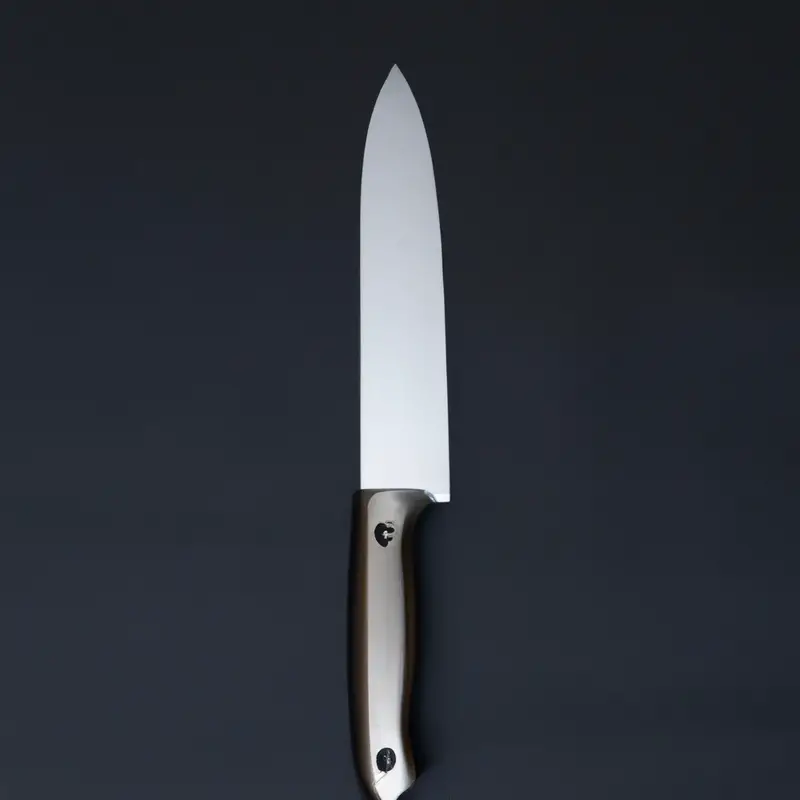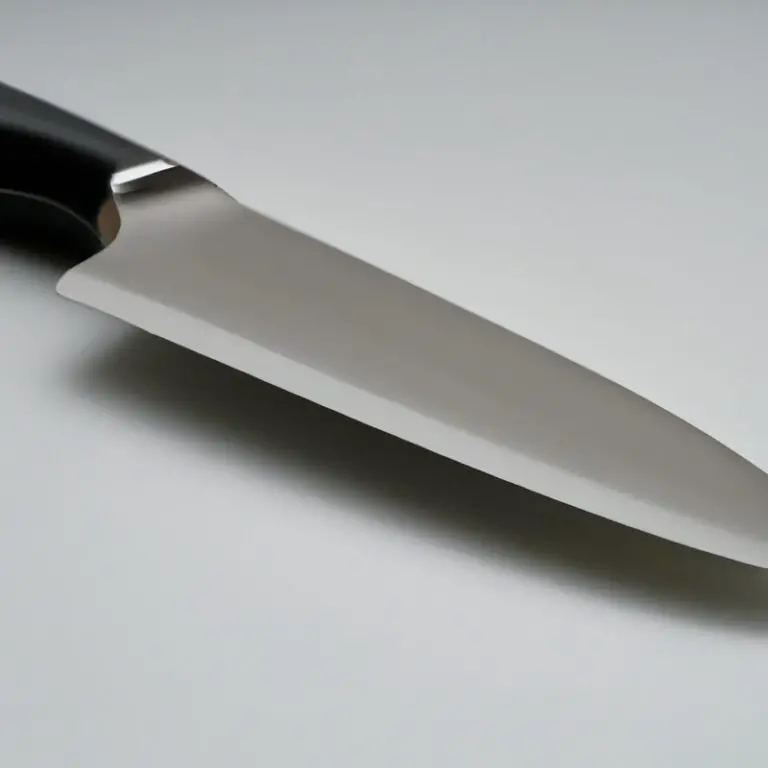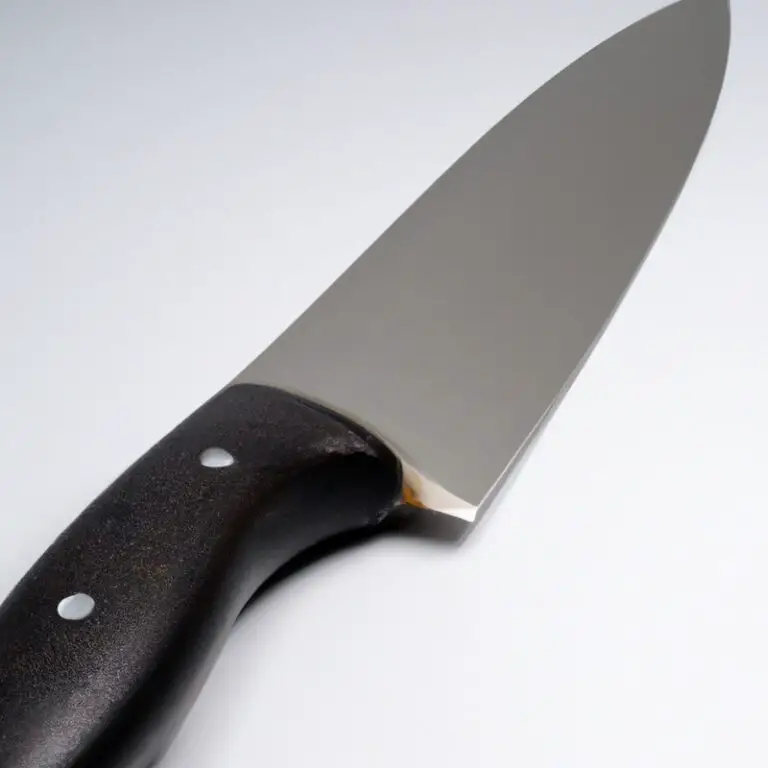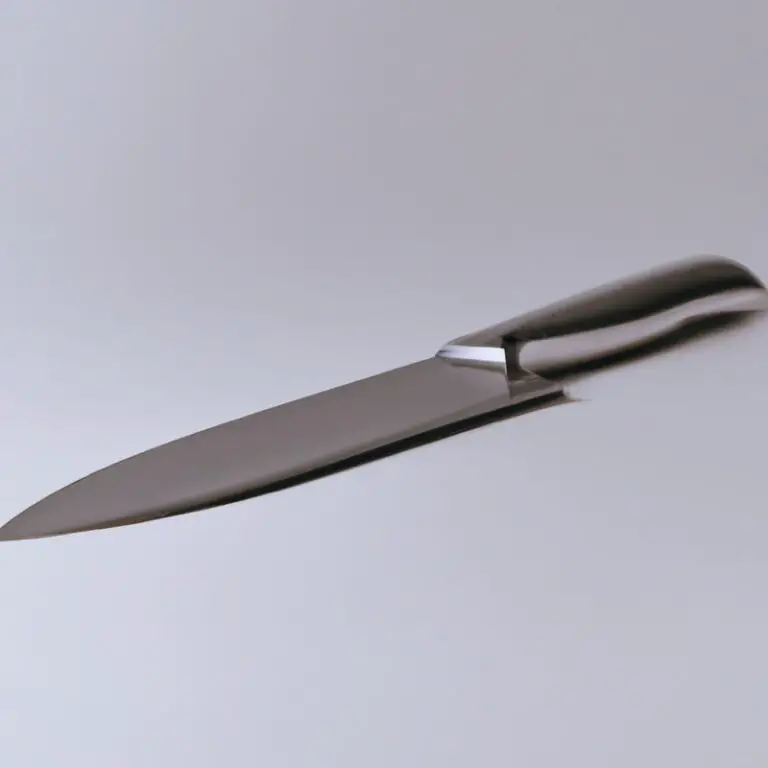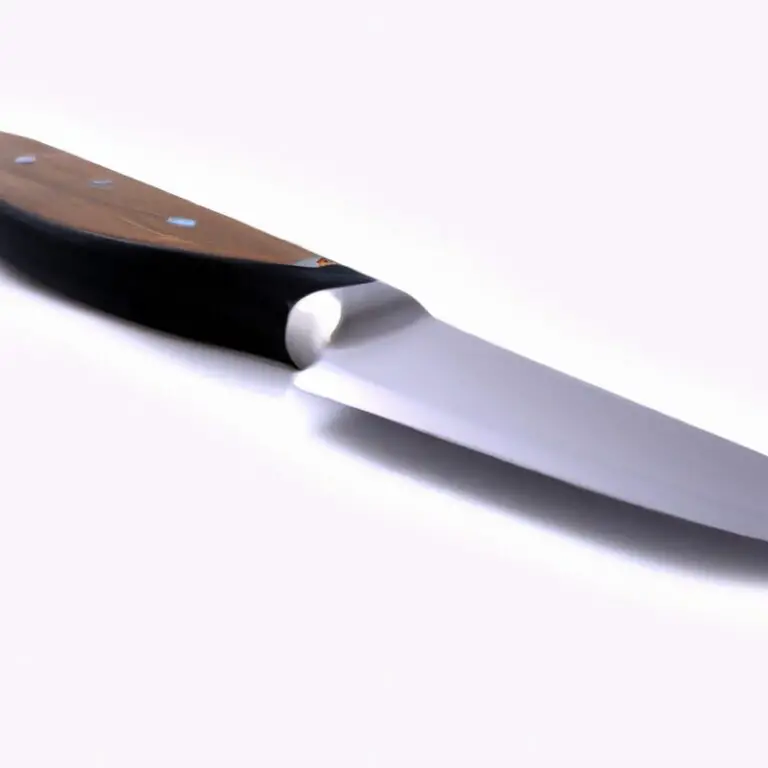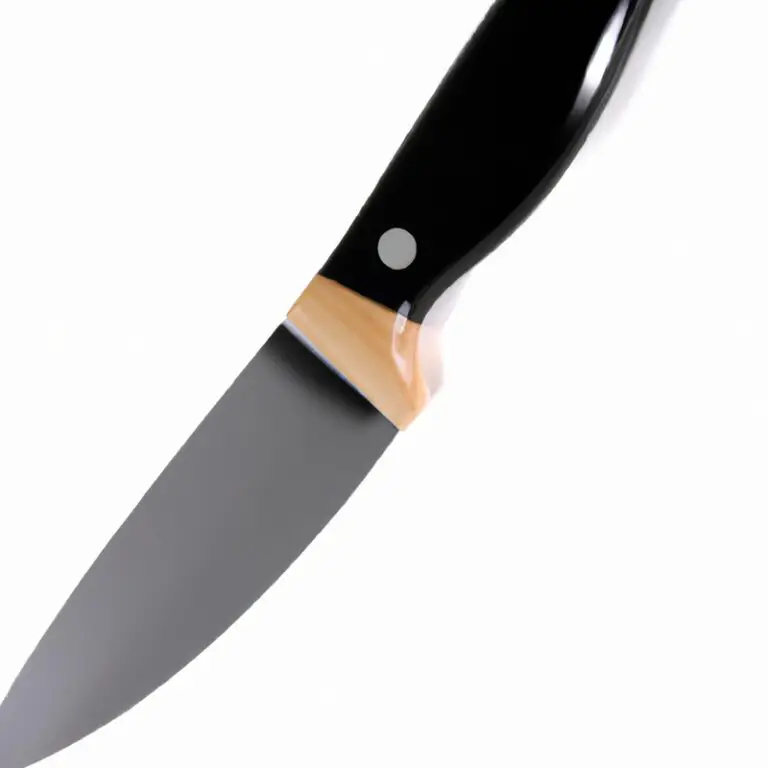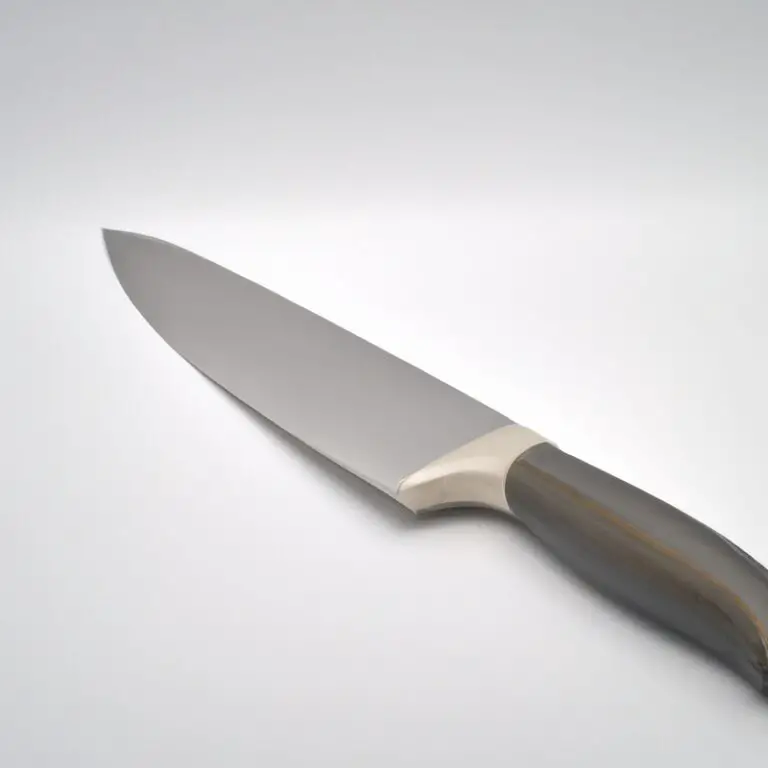How To Choose The Right Handle Material For a Chef Knife?
Key Takeaways:
- Consider the durability, grip, and aesthetics of the handle material when choosing a chef knife.
- Popular handle materials for chef knives include wood, synthetic composites, and stainless steel.
- Match the handle material to the intended use and care of the knife to ensure longevity and performance.
- Don’t compromise on quality when choosing the handle material for your chef knife. A well-crafted handle can make all the difference in your cooking experience.
As a passionate chef and cooking enthusiast, I know that there’s nothing more important to a chef than their trusty kitchen knife, and a key part of that is the handle material. It’s the part of the knife that we hold all day long, and therefore, it plays a crucial role in our kitchen experience.
So, how to choose the right handle material for a chef knife?
Should it be made of traditional wood, high-tech micarta, or something else? In this article, we’ll break down all the factors to consider and the pros and cons of common handle materials, so you can make an informed decision when it comes to your next chef knife purchase.
| Handle Material | Pros | Cons |
|---|---|---|
| Wood | Natural look and feel Provides a comfortable grip Durable and low maintenance Various wood types to choose from | More prone to cracking and warping compared to other materials Not dishwasher safe |
| Plastic | Lightweight and easy to clean Budget-friendly option Dishwasher safe Non-slip grip surface | Not as durable as other materials Can easily wear out with frequent use |
| Metal | Durable and long-lasting Non-porous and easy to clean Sleek and modern look Dishwasher safe | Heat-conductive and may become too hot to handle Can be slippery to grip |
| Bone | Unique and stylish look Strong and durable Provides a comfortable grip | More delicate compared to other materials Easily stained or discolored |
Understanding the importance of handle material in chef knives
The handle material of a chef knife is an essential factor in deciding the overall quality of the knife. It is crucial for the handle to provide a comfortable grip to reduce hand fatigue during extended use.
The handle material also influences the balance and weight of the knife.
Thus, different handle materials offer different levels of durability, maintenance, and aesthetic appeal. Furthermore, customization options are available for those who want to add a personal touch to their chef knife.
Consequently, it is essential to consider intended use, cutting tasks, blade material, and historical and cultural context when choosing the right handle material for a chef knife.
Factors to consider when choosing handle material for a chef knife
When choosing a handle material for a chef knife, consider the following factors:
- Comfort: Choose a handle that provides a comfortable grip and reduces hand fatigue, especially when using the knife for extended periods of time.
- Durability: Look for a handle material that is strong and resistant to wear and tear. Materials like wood, stainless steel, and synthetic composites are durable options.
- Maintenance: Consider how easy it is to clean and maintain the handle material. Materials like wood require more maintenance than synthetic composites or stainless steel.
- Weight and balance: Different handle materials have varying weights that can affect the balance and overall feel of the knife. Consider which weight and balance feels comfortable for you.
- Intended use: Choose a handle material based on the intended use and cutting tasks. For example, if the knife will be used for heavy chopping tasks, a heavier handle material may be preferred.
- Aesthetic appeal: Balancing aesthetic appeal with functionality is important when selecting a handle material. Choose a material that not only looks good but also feels comfortable and functional in your hand.
By considering these factors, you can choose the right handle material for your chef knife that meets your needs and preferences.
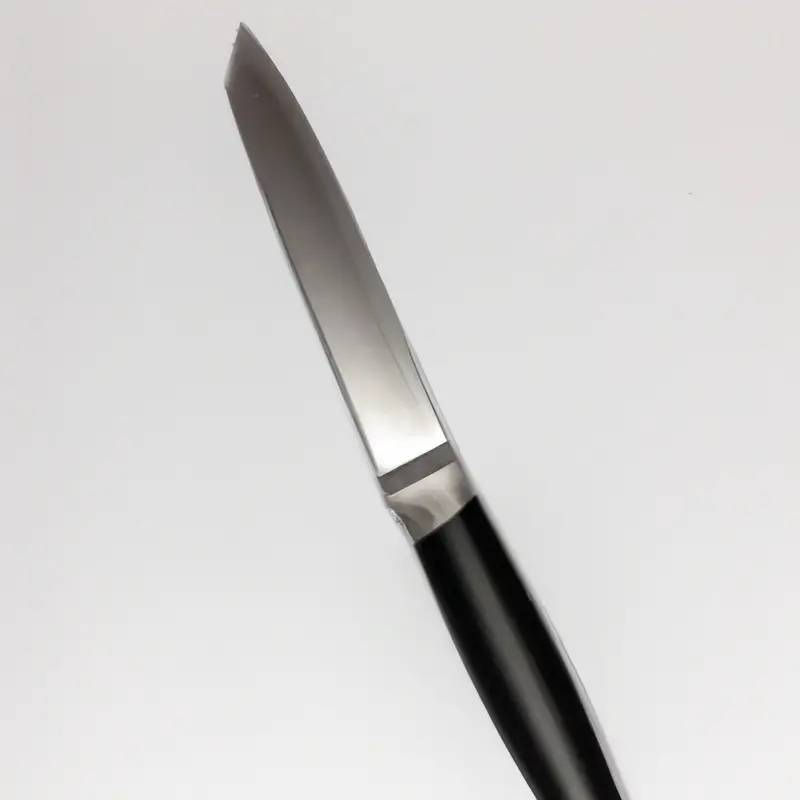
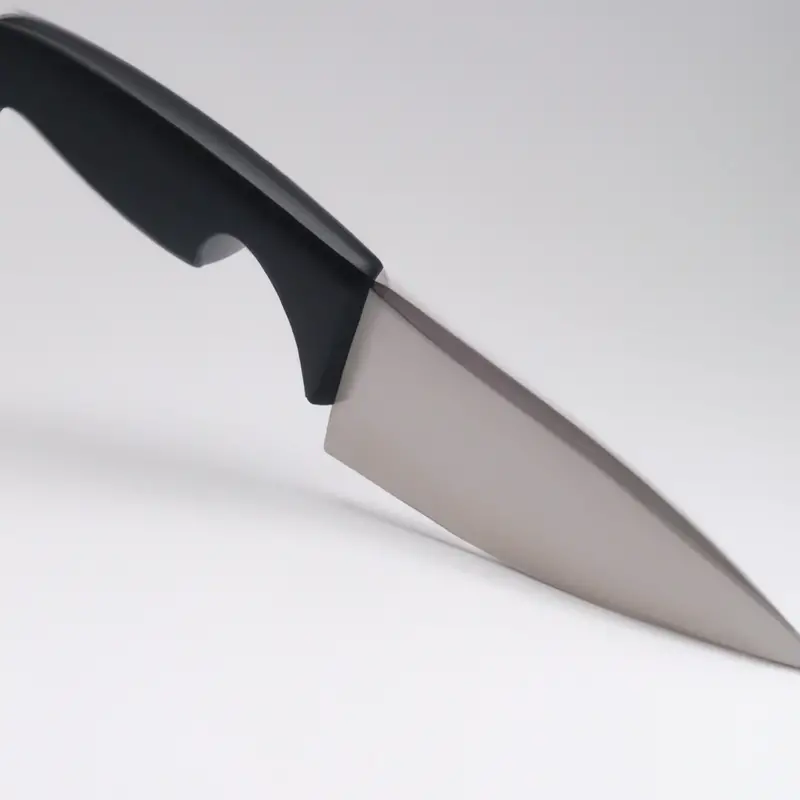
Pros and cons of common handle materials for chef knives
Different materials are used to make handles for chef knives. The most common materials include wood, plastic, metal and composite materials.
Each material has its advantages and disadvantages.
Wooden handles offer a comfortable grip and reduce hand fatigue, making them ideal for kitchens with high volumes of prep work. They are also aesthetically pleasing and add warmth to the kitchen.
However, they require frequent maintenance to prevent rotting and warping.
Plastic handles are cost-effective and easy to clean. They also come in a variety of colours, making them popular with those who prefer a sleek and modern look.
However, they are not as durable as some other materials and can become slippery when wet.
Metal handles offer durability and are resistant to extreme temperatures. They are also easy to clean and maintain.
However, they can become slippery when wet and are often heavier than other materials, which can affect the balance and weight of the knife.
Composite materials, such as G10 and Micarta, are lightweight and durable. They also offer excellent grip and are resistant to moisture, making them ideal for kitchens with high humidity.
However, they tend to be more expensive than other materials and may not be to everyone’s aesthetic taste.
When selecting the right handle material for a chef knife, it is important to consider factors such as durability, maintenance, grip, comfort, weight, and aesthetics. Ultimately, the choice will depend on personal preference and intended use.
How different handle materials affect the balance and weight of a chef knife
The handle material of a chef knife plays a significant role in determining its balance and weight. Different handle materials have different densities and weight, which can significantly influence the overall balance of the knife.
For instance, a heavy handle made of materials like metal or dense wood can result in a front-heavy knife, while lighter materials like plastic or composite materials may lead to a back-heavy knife.
Furthermore, a comfortable grip is an essential aspect of the handle for reducing hand fatigue and preventing injuries during prolonged use. Handle materials like wood, plastic, or composite materials can offer a comfortable grip due to their non-slip textures and ergonomic design.
On the contrary, metal handles may pose a challenge to users who require a firm grip.
In summary, when choosing a handle material for a chef knife, it’s essential to consider how it affects the overall balance of the knife and whether it offers a comfortable grip. Ultimately, the handle material that provides the best balance and grip will depend on the user’s personal preferences and intended use for the knife.
Handle materials that offer a comfortable grip and reduce hand fatigue
One of the most critical factors to consider when selecting a handle material for your chef knife is the ergonomics and comfort it offers. Look for materials that offer a comfortable grip, reduce hand fatigue, and provide excellent traction.
Materials like rubber, plastic, and silicone are a great choice as they absorb shock and vibration, making your cutting experience more comfortable.
Wood is also a viable option, as it has a natural grip that conforms to the shape of your hand. Keep in mind that while beautiful handle materials like bone or ivory look great, they may not provide the same level of comfort and grip as modern materials.
Ultimately, you want a handle material that feels good in your hand and allows you to work efficiently without causing undue strain or discomfort.
Ideal handle materials for durability and maintenance
Ideal handle materials for durability and maintenance include stainless steel, G-10, and Micarta. These materials offer exceptional strength and resilience, making them suitable for daily use and routine maintenance.
Stainless steel is resistant to corrosion and stains, while G-10 and Micarta have high impact resistance and are easy to clean.
It is important to note that while wood and bone materials may also be durable, they require more maintenance and may not be as long-lasting as synthetic materials. Overall, choosing a handle material that is durable and easy to maintain will ensure your chef knife’s longevity and performance.
Deciding on handle material based on intended use and cutting tasks
Deciding on the right handle material for a chef knife depends on intended use and cutting tasks. Certain materials may offer more grip and reduce hand fatigue, while others may provide durability and ease of maintenance.
For lighter tasks, lighter materials such as plastic or wood may be adequate, while heavier tasks may require heavier materials such as stainless steel or titanium.
Handle materials can also affect the balance and weight of the knife, so it’s important to consider the overall feel when using the knife. When deciding on handle material, it’s important to balance aesthetic appeal with functionality, while also considering sustainability and eco-friendliness.
Matching the handle material with the blade material can also optimize performance.
Ultimately, the right handle material will depend on personal preference, intended use, and cutting tasks.
Balancing aesthetic appeal with functionality when selecting handle material
Balancing aesthetic appeal with functionality is crucial when selecting the handle material for a chef knife. The handle material should not only be visually appealing but also provide a comfortable grip for prolonged use and reduce hand fatigue.
Factors like durability, maintenance, and weight should also be considered to ensure the handle material meets the intended use and cutting tasks of the knife.
While natural materials like wood and bone offer a classic look, modern materials like G10 and Micarta offer improved durability and grip. Ultimately, the handle material should complement the blade material, resulting in a well-balanced chef knife for optimal performance.
Sustainability and eco-friendliness in handle material options
Sustainability and eco-friendliness are crucial considerations when selecting handle materials for a chef knife. Opting for renewable, biodegradable, and naturally sourced materials can help reduce your environmental impact.
Consider materials like wood, bamboo, and cork, which are renewable and biodegradable.
Another option is recycled materials like plastic, which can increase sustainability by reducing waste. Certain materials like bone, horn, and ivory should be avoided as they contribute to animal exploitation and habitat loss.
Always ensure the material is responsibly sourced.
Innovative handle materials that challenge tradition in chef knives
Innovative handle materials have been developed that challenge the traditional materials used in chef knife handles. These materials include carbon fiber, G10, and Micarta.
Carbon fiber is a lightweight and durable material that provides a comfortable grip.
G10 is made from fiberglass and epoxy resin, offering a strong and sturdy handle. Micarta is a composite material made from paper, linen, or fiberglass, providing a soft yet secure grip.
These non-traditional handle materials offer unique aesthetics and functionality that appeal to different preferences and cutting styles.
When choosing an innovative handle material, consider your intended use and cutting tasks to determine which material is best suited for your needs.
How to properly care for and maintain different handle materials
Proper care and maintenance of chef knife handles are essential to prolong their life and keep them looking their best. Here are some tips: For wooden handles:
- Keep them dry and avoid soaking them in water.
- Apply a small amount of mineral oil or beeswax regularly to maintain their shine and prevent cracking.
- Avoid using abrasive cleaners or scrubbers.
For plastic handles:
- Wash with soap and water.
- Avoid using bleach or ammonia-based cleaners as they can damage the material.
- Store in a dry place.
For metal handles:
- Use a damp cloth to wipe them clean.
- Dry thoroughly to prevent rust.
- Avoid using harsh chemicals or abrasive scrubbers.
For composite handles:
- Follow the manufacturer’s care instructions.
- Most can be washed with soap and water and dried thoroughly.
- Avoid prolonged exposure to direct sunlight or heat sources.
Proper care and maintenance of chef knife handles not only prolongs their lifetime but also ensures a comfortable and safe grip during use.
Customization and personalization options in handle material selection for chef knives
Customization and personalization options in handle material selection for chef knives are abundant. Many knife makers offer handle materials in various colors, textures, and finishes.
Additionally, some even offer custom engravings or etchings to make the knife uniquely yours.
When selecting a handle material, consider not only its aesthetic appeal but also its functionality and durability. Keep in mind that some customization options may affect the cost and lead time for your knife.
However, investing in a personalized chef knife can make it a treasured tool in your kitchen for years to come.
Balancing cost with quality when choosing the right handle material for a chef knife
When it comes to chef knives, the handle material is just as important as the blade. But with so many options available, it can be challenging to decide on the right one.
One important consideration is how to balance cost with quality.
While it’s tempting to opt for cheaper handle materials to save money, keep in mind that investing in a high-quality handle material will lead to increased durability and longevity. Certain materials, such as plastic or lower-grade woods, may be less expensive but can wear out quickly with regular use.
On the other hand, materials like high-grade woods or composite materials may come with a higher price tag but offer increased durability and resistance to wear and tear.
When making a decision, assess your budget and consider the intended use of the knife. A chef who uses their knife daily may prioritize quality and durability, while a home cook might be more comfortable with a less expensive option.
Ultimately, finding a balance between cost and quality is key.
It’s important to invest in a handle material that will suit your needs and keep your knife in good condition over time.
Matching handle material with blade material for optimal performance
Matching the handle material with blade material is crucial for achieving optimal performance when using a chef knife. The handle and blade must work in unison to create a balanced and comfortable cutting experience.
For example, heavier blade materials like stainless steel require a denser handle material such as hardwood or G-10 to provide balance.
Lighter blade materials like ceramic work better with lighter handle materials such as carbon fiber or titanium. It is important to select handle material that is not only durable but also resistant to moisture and temperature changes to ensure longevity.
Ultimately, the handle material selected should enhance the performance of the blade it is paired with.
How historical and cultural context can influence handle material selection
Historical and cultural context can greatly influence the selection of handle materials for chef knives. For instance, in Japan, traditional chef knives have handles made from materials that are native to the region, such as magnolia wood.
Similarly, certain cultures place a high value on the aesthetics of the handle material, which may impact the selection.
Furthermore, historical knowledge of which materials were traditionally used, and their durability and suitability for different tasks, can be valuable in guiding the selection of handle material for chef knives. Therefore, understanding the historical and cultural context of chef knife handle materials can inform and enrich the selection process.
Final Verdict
The handle material of a chef knife plays a crucial role in its overall performance, durability, and comfort. Through understanding the pros and cons of different handle materials, you can make an informed decision based on your cutting tasks, personal preferences, and sustainability goals.
Remember to balance aesthetic appeal with functionality, and always match the handle material with the blade material for optimal performance.
By properly caring for your chosen handle material, you can ensure its longevity and maintain a comfortable grip. Whether you opt for traditional materials or innovative alternatives, prioritize quality over cost for a reliable and long-lasting chef knife.
Ultimately, by taking the time to carefully choose the right handle material, you can elevate your culinary experience and achieve greater precision and control in your cutting tasks.

